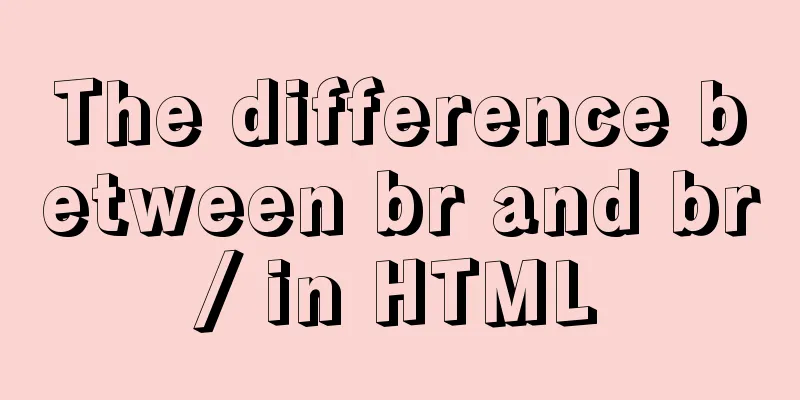The difference between br and br/ in HTML

|
answer from stackflow: Simply <br> is sufficient. The other forms are there for compatibility with XHTML; to make it possible to write the same code as XHTML, and have it also work as HTML. Some systems that generate HTML may be based on XML generators, and thus not have the ability to output just a bare <br> tag; if you're using such a system, it's fine to use <br/>, it's just not necessary if you don't need to do it. Very few people actually use XHTML, however. You need to serve your content as application/xhtml+xml for it to be interpreted as XHTML, and that will not work in IE (it will also mean that any small error you make will prevent your page from being displayed, in browsers that do support XHTML). So, most of what looks like XHTML on the web is actually being served, and interpreted, as HTML. See Serving XHTML as text/html Considered Harmful for some more information. This means: the rule in HTML is <br>empty tag with no end character, but in XHTML, the rule is <br/>the start tag is followed by the end tag. In XHTML, <br> tags must be properly closed, like this: <br />. The <br> tag is an empty tag (meaning it has no closing tag, so this is wrong: <br></br>). In XHTML, place the closing tag within the opening tag, that is, <br />. |
<<: Basic knowledge: What does http mean before a website address?
>>: Implementation of MySQL GRANT user authorization
Recommend
Installation and configuration tutorial of Linux virtual machine under Windows operating system
Preface At work, we often need to operate in a Li...
How to prevent duplicate submission in jquery project
In new projects, axios can prevent duplicate subm...
What to do if you forget your mysql password
Solution to forgetting MySQL password: [root@loca...
Implementing calculator functions with WeChat applet
This article is a simple calculator written using...
How to modify iTunes backup path under Windows
0. Preparation: • Close iTunes • Kill the service...
WeChat applet implements sorting function based on date and time
I recently took over a small program project, and...
How to implement Nginx reverse proxy and load balancing (based on Linux)
Let's try out nginx's reverse proxy here....
ReactRouter implementation
ReactRouter implementation ReactRouter is the cor...
Using radial gradient in CSS to achieve card effect
A few days ago, a colleague received a points mal...
Detailed explanation of the principle of js Proxy
Table of contents What is Proxy Mode? Introducing...
Test and solution for MySQL's large memory usage and high CPU usage
After the changes: innodb_buffer_pool_size=576M -...
Introduction to fork in multithreading under Linux
Table of contents Question: Case (1) fork before ...
Detailed explanation of the rounding accuracy problem of the toFixed() method in JS
Table of contents The pitfalls Filling method Wha...
JavaScript destructuring assignment detailed explanation
Table of contents concept Array Destructuring Dec...
The use of anchor points in HTML_PowerNode Java Academy
Now let's summarize several situations of con...









